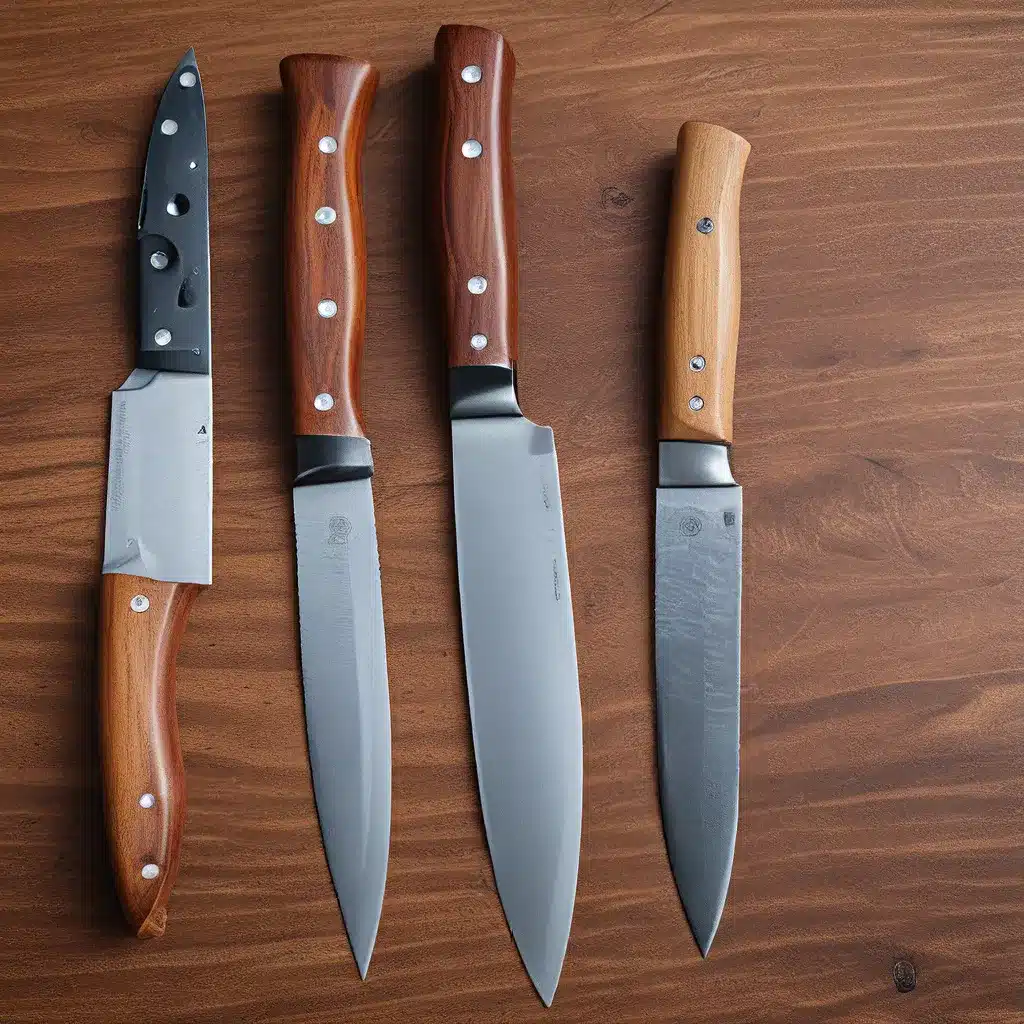
The Difference Between Honing and Sharpening
As a passionate home cook, I know the importance of keeping my knives in top shape. But if I’m being honest, I used to get a little confused about the difference between honing and sharpening. Are they the same thing? Do I really need to do both? Well, after delving into the topic, I can now confidently say that they are not the same, and both play a crucial role in knife maintenance.
Honing is the process of realigning the microscopic teeth on the blade of a knife. It’s kind of like getting a quick trim for your hair – it doesn’t actually remove any material, it just ensures everything is in good order. Honing should be done regularly, ideally before each use, to keep your knife’s edge in prime condition.
Sharpening, on the other hand, is the process of physically removing metal from the blade to create a brand new, razor-sharp edge. This is more like getting a full haircut with scissors – it takes off a bit more and gives you a fresh start. Sharpening needs to be done periodically, usually once or twice a year, to counteract the natural dulling that occurs with regular use.
So in summary, honing is the quick touch-up to maintain your knife’s sharpness, while sharpening is the more involved process of restoring a keen edge. Both are essential for keeping your blades in top-notch shape.
Mastering the Art of Knife Sharpening
Now that we’ve got the basics down, let’s dive into the world of knife sharpening. There are a few different methods you can use, each with its own advantages. The one I’ve found to be the most effective (and satisfying) is using a sharpening stone.
Sharpening stones, also known as whetstones, are made of an abrasive material that physically removes microscopic layers of metal from your knife’s edge. The stones come in a range of grit sizes – lower grit (like 1000) will remove material faster and create a coarser edge, while higher grit (like 6000 or 8000) will polish the edge to a mirror-like finish.
The key is to find the right stone (or set of stones) for your needs and learn the proper technique. It takes a bit of practice, but once you get the hang of it, you’ll be sharpening like a pro. Start with a medium grit stone to get the edge back, then move to a finer stone to refine and polish.
And don’t forget the importance of maintaining your sharpening stones. Use a flattening stone or brick to keep the surface true and even. This ensures your knives get a consistent, high-quality edge every time.
The Benefits of a Sharp Knife
You might be thinking, “Sure, sharpening sounds great, but is it really that important?” The answer is a resounding yes! There are so many benefits to keeping your knives razor-sharp:
-
Precision and Control: A sharp knife allows you to make precise, clean cuts. This is especially important for delicate tasks like slicing tomatoes or filleting fish.
-
Safety: Contrary to popular belief, a dull knife is more dangerous than a sharp one. Dull blades require more force, increasing the risk of slips and accidents.
-
Efficiency: With a sharp knife, you can breeze through prep work with less effort. No more sawing away at that stubborn onion!
-
Enjoyment: There’s something immensely satisfying about using a knife that glides through ingredients with ease. It makes the whole cooking process more enjoyable.
Investing a bit of time and effort into sharpening your knives is truly a game-changer in the kitchen. Your cooking will benefit, and you’ll likely find the process just as rewarding as the results.
Putting It All Together
Okay, so we’ve covered the difference between honing and sharpening, explored the art of using a sharpening stone, and talked about the many benefits of keeping your blades in top condition. Now it’s time to put it all together and create a simple routine to maintain your knives.
First and foremost, hone your knives before each use. This quick touch-up will ensure your edge is always in prime condition. Then, as a general rule, plan to sharpen your knives at least once or twice a year. The exact frequency will depend on how often you use them, but it’s better to err on the side of sharpening too often than not often enough.
When it comes time to sharpen, set aside a bit of time and focus. Find a good sharpening stone (or set) and follow the proper technique. Start with a medium grit, then move to a finer stone to get that mirror-like finish. And don’t forget to maintain your stones – a quick flattening session will keep them working their best.
Remember, sharp knives are safer, more efficient, and simply more enjoyable to use. Mastering the art of knife sharpening is an incredibly rewarding skill that will elevate your cooking game. So grab those blades, sharpen them up, and get ready to slice, dice, and julienne with precision and confidence.
And of course, if you ever need a little extra help or want to explore the wide world of kitchen tools, be sure to check out Saint Marc. They’ve got everything you need to take your culinary skills to the next level.
Happy sharpening, my friends!

